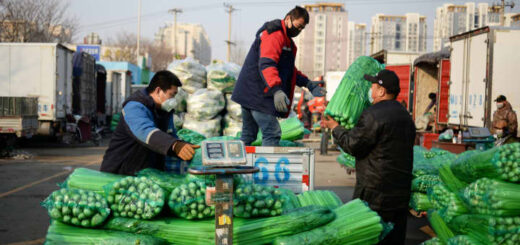Oil market elements are evolving

The new OPEC+ choice to not freeze creation development was an indication that oil makers are progressively being compelled to pay attention to customers.
Oil costs are rising, driven by solid worldwide development and the reappearance of a Mideast hazard premium. The market elements of this round of oil cost increments, be that as it may, are strikingly not the same as ongoing episodes, for example, in 2008 or 2012-2013. There are two key contrasts this time around that merit our concentration: (1) shale oil supply might react more quickly to value motivations than more seasoned advancements, and (2) the U.S. is presently an oil exporter (just as shipper). As we investigate these two themes, we will see some exceptional subtleties and admonitions, as well.
Recently, the Organization of the Petroleum Exporting Countries (OPEC) and its partners, a gathering known as OPEC+, reported their choice to stay with their arranged result increment of 400,000 barrels every day in January.
The breakdown in the cost of oil that started in the final quarter of 2014 and hit its box in February 2016 was a postponed reaction to the monstrous expansion in supply achieved by the U.S. shale oil insurgency. The primary phase of the value recuperation during 2016 into the $40 to $55/barrel range was generally a loosening up of the cost, having been driven impressively beneath the minimal expense at which U.S. shale makers could productively separate oil. During the oil value slide, there was selling by institutional benefits and gift reserves, for the most part through outsider chiefs, as these assets slice their resource allotment to products overall and oil specifically. There were likewise constrained liquidations because of monetary trouble among specific oil market members. When the resource allocators had rebalanced and the monetary trouble selling had finished, the oil cost floated back up to all the more likely mirror the stock financial aspects of the shale extractors who were arising as the swing makers to challenge OPEC in the worldwide market.
The gathering’s choice came during a period of elevated worry for makers and buyers and focused on the new real factors and changing elements of worldwide hydrocarbon markets.
We are currently in a second phase of cost builds taking the reach up toward $60 – $85/barrel. This time around the drivers are, first, the quicker speed of worldwide development and besides, the appearance of a Mideast hazard premium because of rising strains among Iran and Saudi Arabia, significant oil exporters. (See CME Group Senior Economist Erik Norland’s examination report from March 21, 2018, “Oil: Could Iran Risk Reverse Options’ Bearish Signal?” . Both the worldwide development and Mideast hazard premium value drivers are relied upon to stay in play for the remainder of 2018 and into 2019, keeping up strain on the cost of oil. There are, be that as it may, alleviating factors, as well.
On December 2, OPEC+ nations met up at a virtual gathering to choose two situations: proceeding to expand their creation volume or briefly freezing it.
By all accounts, there were numerous solid inspirations for them to decide on the last choice: the normal oversupply in the main portion of 2022; the dread that another strain of Covid could additionally decrease the pace of oil utilization; and the choice by the United States and various different nations, including India, China, Japan and South Korea, to let huge volumes of oil out of their essential stores to the market to lessen costs. Notwithstanding, in spite of hearing solid contentions for a freeze, the cartel chose to hang tight on its present result plan.
With U.S. shale oil makers ready to lift creation more quickly than more conventional extraction innovations, oil supply might be more flexible, essentially north of a 6-to-18-month time skyline than during past episodes of oil value rises. OPEC, or we should say Saudi Arabia and Russia, may likewise quit controling creation as costs rise nearer to their objective reach.
In the first place, the current financial improvement systems of the key OPEC+ players (and, particularly Gulf governments) make freezing (or diminishing) creation amounts an unwanted situation. Over the long haul, worldwide oil request is relied upon to decay, genuinely decreasing the salaries of oil exporters and transforming a portion of their oil fields into abandoned resources. To stay away from this, makers are attempting to enhance their economies and to make environmentally friendly power a suitable piece of their financial designs. For the present, the main suitable wellspring of financing OPEC+ nations have for their expansion endeavors is their oil assets, and they are under expanding strain to transform these assets into cash before the anticipated decrease popular and fall in costs downgrade them. This implies, for OPEC+ nations, the self inflicted yield restrictions can be just impermanent measures to balance out the oil market and defer the fall in costs – over the long haul, it will forever be more valuable for oil makers to expand creation volumes.
Expanded Oil Supply Elasticity
Indeed, even before shale oil, unrefined petroleum creation was dependably more versatile and receptive to value changes than flammable gas. Transient interest changes might be met by adding to or pulling out from inventories. Likewise, Saudi Arabia frequently went about as the swing maker, feeling that it was in its drawn out interest to have a less unpredictable cost of oil. Assuming that vertical value pressures endure and are seen as durable, then, at that point, both U.S. shale makers and OPEC might carry out plans to increment long haul creation.
At the point when a ware has a generally fixed or inelastic inventory, then, at that point, for given changes popular the effect on costs is amplified contrasted with a ware with profoundly adaptable or versatile stockpile. Gaseous petrol is an illustration of an item wherein supply reactions to sequential costs are profoundly obliged in the short and surprisingly medium term. As anyone might expect then, at that point, flammable gas shows extensive value instability because of interest swings, frequently determined by changing climate designs.
Purchaser power on the ascent
One more significant explanation for the choice by OPEC+ to not freeze creation portions was its feeling of dread toward enraging the principle oil-bringing in nations. Nowadays, oil purchasers are bit by bit expanding their impact over the market. With the advancement of energy change and the normal return of successive market oversupply, it is progressively request, not supply, that is deciding the elements of oil and gas costs.
This time around, with oil costs above $60/barrel and ascending with worldwide development and Mideast pressures, the creation expansions in the second 50% of 2018 and into 2019 are probably going to take U.S. oil creation toward 12 million barrels each day in 2019. This contrasts and current Russian creation of around 11 million barrels each day and Saudi Arabian creation of around 10 million. One should recall that not long prior to cutting creation, both Saudi Arabia and Russia knock creation up near their cutoff points to make the cuts look greater. All things considered, assuming we are right that OPEC might move back its creation restrictions, then, at that point, however much 1.5 million extra barrels a day of Saudi oil might be coming to showcase in 2019 and potentially 0.5 million barrels per day of Russian oil.
Obviously, Biden’s choice on November 23 was not an altogether presentation of war, but rather an exhibit of purchasers’ new acquired ability to influence the market. As far as its scale, the absolute volume of oil intended to be let out of stores doesn’t surpass the worldwide every day interest (be that as it may, to adjust it, OPEC+ would in any case have to leave expanding creation portions for quite a while). Besides, the arrival of additional barrels will be stunned, and a critical piece of them ought to be returned by venders to the US hold. There are likewise still a few inquiries over the responsibility of US’s Asian accomplices to delivering their stores.
Disclaimer: The views, suggestions, and opinions expressed here are the sole responsibility of the experts. No STOCKS MONO journalist was involved in the writing and production of this article.



